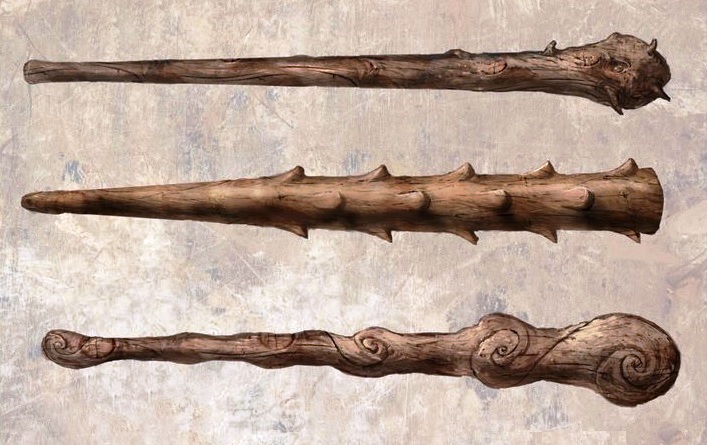Difference between revisions of "Club (weapon)"
Tao alexis (talk | contribs) |
|||
| Line 1: | Line 1: | ||
[[File:Club (weapon) b.jpg|right|560px|thumb]] | [[File:Club (weapon) b.jpg|right|560px|thumb]] | ||
| − | The '''club''', also called a | + | The '''club''', also called a cudgel, bludgeon, shillelagh, bang or knobkerrie, serves as a versatile [[Melee|melee]] [[Weapons List|weapon]] and a [[Missile Weapons|hurled projectile]], traditionally crafted from hardwood. Typically, it takes the form of a wooden shaft measuring approximately 24 to 30 inches in length, featuring a reinforced, rounded knob at one end. |
__TOC__ | __TOC__ | ||
It has the benefit that anyone can fashion a makeshift club from everyday objects such as a table-leg, a fragment of a bannister or even a belaying pin — any might be employed as an [[Using Found Objects as Weapons|improvised club]] if no other weaponry is at hand. | It has the benefit that anyone can fashion a makeshift club from everyday objects such as a table-leg, a fragment of a bannister or even a belaying pin — any might be employed as an [[Using Found Objects as Weapons|improvised club]] if no other weaponry is at hand. | ||
Revision as of 20:26, 31 October 2023
The club, also called a cudgel, bludgeon, shillelagh, bang or knobkerrie, serves as a versatile melee weapon and a hurled projectile, traditionally crafted from hardwood. Typically, it takes the form of a wooden shaft measuring approximately 24 to 30 inches in length, featuring a reinforced, rounded knob at one end.
Contents
It has the benefit that anyone can fashion a makeshift club from everyday objects such as a table-leg, a fragment of a bannister or even a belaying pin — any might be employed as an improvised club if no other weaponry is at hand.
Weapons with spikes, metal-weighted heads, chiseled sharp edges or set with metal studs belong to a different class of weaponry and are more appropriately categorized as maces or godentags. These specialized variations are described elsewhere.
Combat
The club inflicts damage ranging from 1 to 6 hit points, adjusted by the wielder's strength. When using it in close combat, fighters often employ a swift, forceful swing, leveraging their strength to maximize the impact.
| Bow | Point Blank |
Short | Medium | Long |
|---|---|---|---|---|
| Club | 2 | 3-5 | 6-7 | 8-9 |
The goal is to strike the target with the rounded knob or the hardened end of the club, aiming for vulnerable areas to deliver a powerful blow. This is particular effective with the shillelagh, which can be transformed by the 1st level druid spell of the same name, augmenting the weapon so that it causes 2-8 damage and acts as a magical weapon.
Hitting with a hurled club can be improved by a high [[Dexterity (ability stat)|dexterity. The range of a thrown club is typically limited, making it essential for the thrower to have a good sense of distance and timing. A well-aimed throw can catch opponents off guard or incapacitate them from a distance, adding a tactical advantage to this unconventional use of the weapon.
The table shown provides the effective range of a club, remembering at there's a +1 bonus to hit at point blank range, while medium range gives a -2 penalty; long range gives a -5 penalty.
Characteristics and Background
The club, weighing in at 3½ lbs., is classified as a "light weapon," designed for one-handed use. It needs but one action point to be drawn from a character's belt. In the event of a roll to hit resulting in a fumble, there is a 1 in 4 chance that the club will break. Its dimensions and length make it suitable for wielding while on horseback, adding to its versatility in combat scenarios.
The club has a rich history as a hereditary weapon in various cultures. Characters raised in the Dutch Colonies may inherit the knop, while those from Leinster and Munster may have a shillelagh lineage. Northumbria and Ulster descendants may possess a cudgel. Among the Zulu, the knobkerrie is a common ancestral weapon; the Plains Natives of America used a similar-shaped war club.
Among professions, the club is favored by hermits, innkeepers and sailors. These cultures and individuals all enjoy a +1 bonus to hit once they've received formal training in weapons, sufficient to make them soldiers-at-arms.
See also,
Commoner (non-player character)
Harden Commoner (sage ability)
Woodcraft (cantrip)
